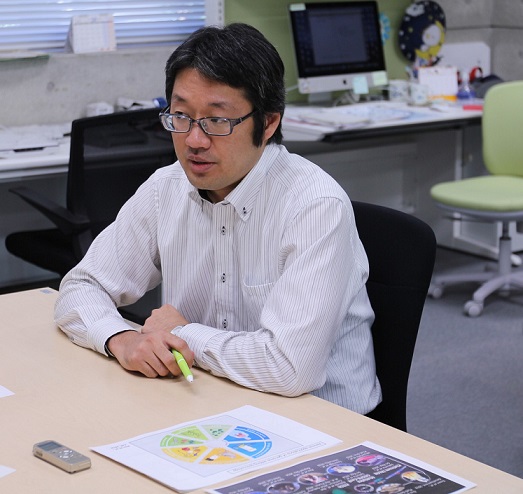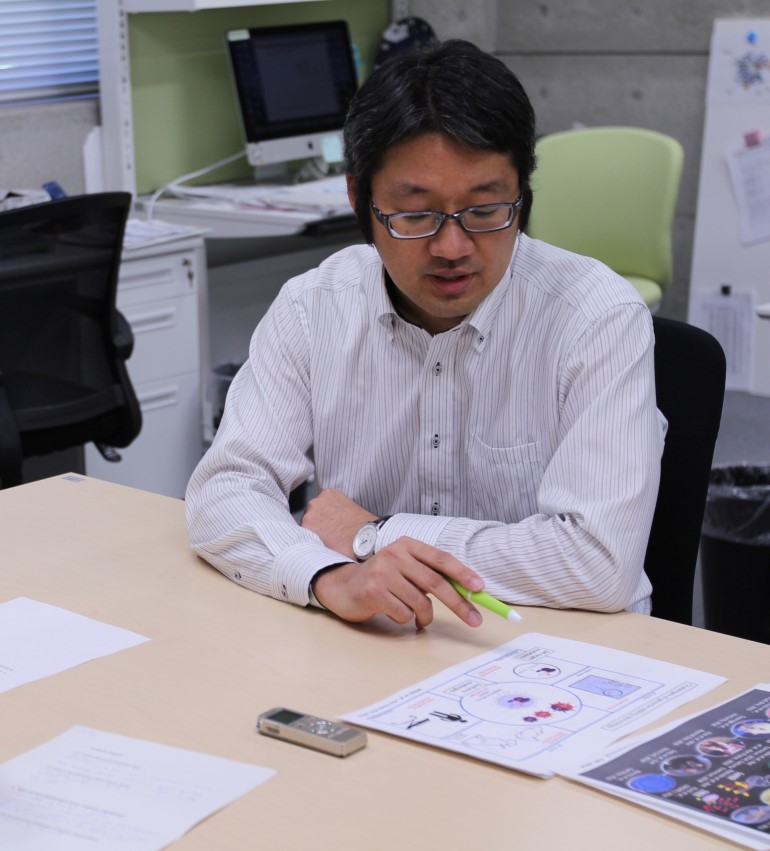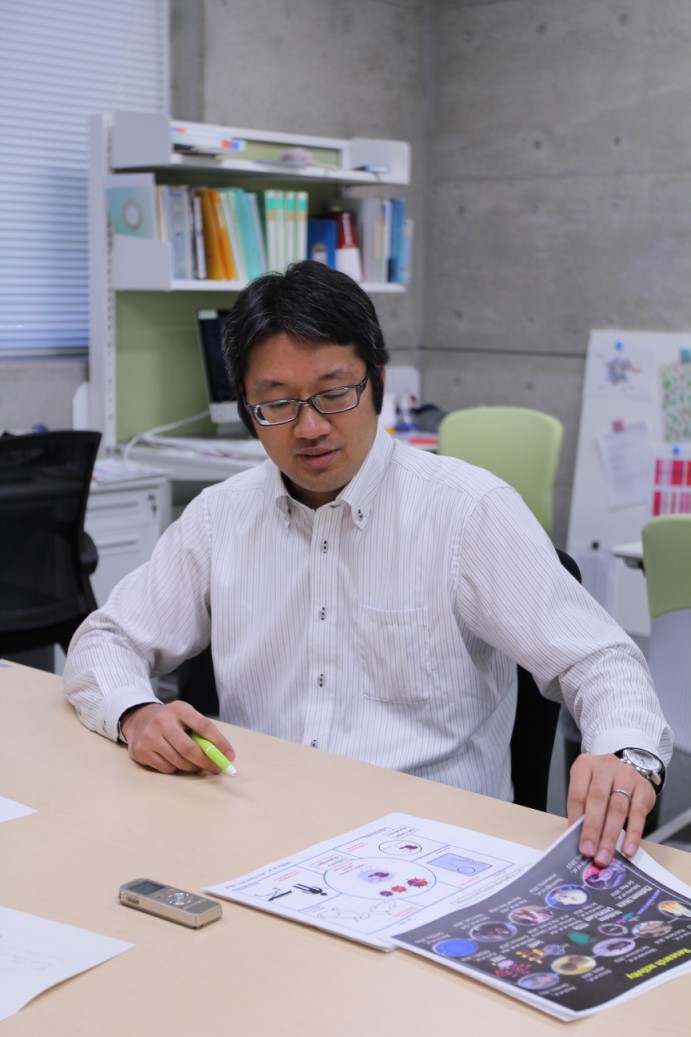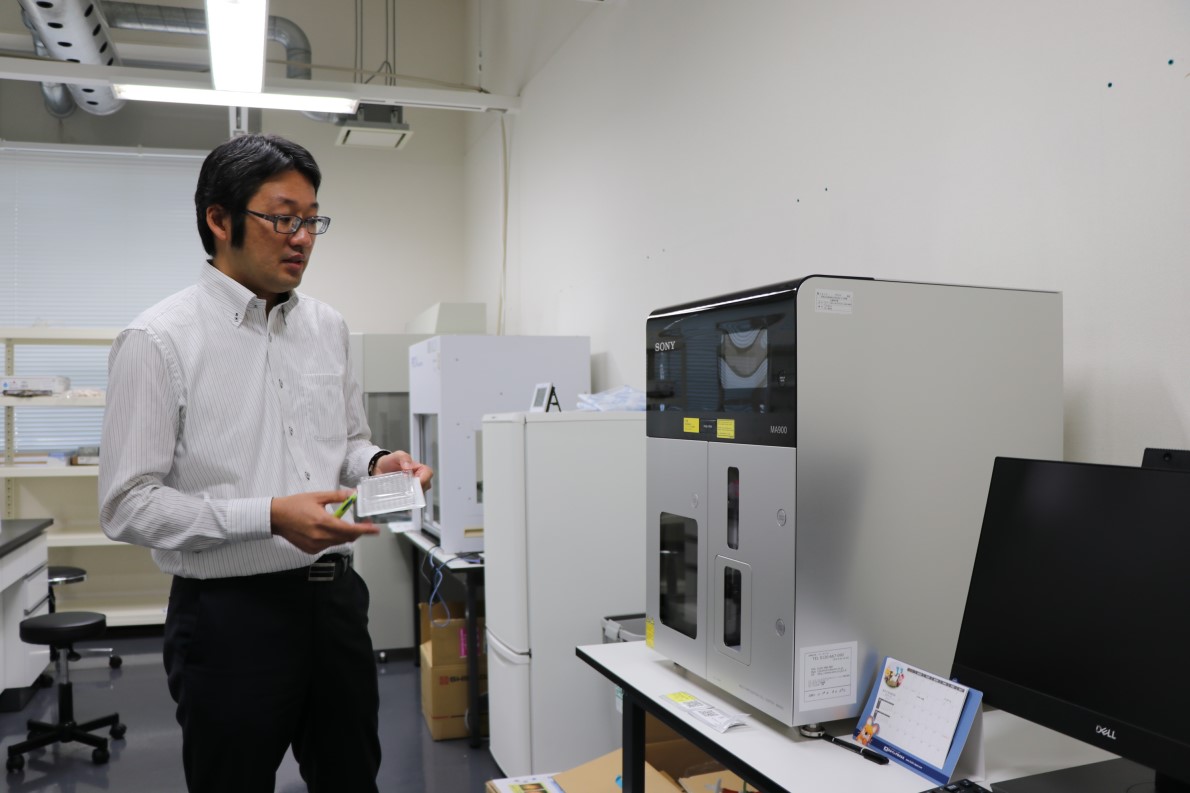On February 1, 2013, Hiroshima University established two new programs: the “Distinguished Professors” (DP) program and the “Distinguished Researchers” (DR) program. Individuals who are part of these programs are recognized as senior and junior faculty members respectively, who are engaged in extraordinarily distinguished research activities.
A Conversation with Distinguished Researcher Tetsushi Sakuma

You work in the field of genome editing. Please tell me about what you do.
I am a basic technology developer. I make tools used in gene editing, but I don't focus on specific applications. The tools I make are usable in any application.
What are the applications of your work?
Basic biology (or fundamental biology) has lots of applicability. The tools I make are used in a wide variety of areas, for example creating animal models, mimicking genetic variations and also for industrial biotechnology including producing materials, genetically engineered foods and biofuels. There are, of course, medical applications that are quite important.
Why is genetic engineering so useful as a scientific tool?
There are 2 main reasons why this technology is applicable:
1. The editing target is double-stranded DNA, which is in all living things: animals, plants and microorganisms. So the technology can be applied in any organism for any purpose.
2. Genomic DNA is a blueprint of life so editing the genome means editing living organisms themselves. We can do anything with creative ideas.

Could you tell me about the challenges of genetic engineering?
The programmable tools are designed to cut a specific sequence of the genome. If there is a similar sequence to the target there is a risk of off-target effects. This means that another section of DNA is affected that was not supposed to be.
There is also a challenge of delivering the technology, especially for medical applications. We can create molecular medicine for genetic diseases for muscular dystrophy for example. In order for the technology to have a clinical effect we have to deliver the tool in their muscles cells of the patient in their whole body.
Typical scientists face unknown phenomena to reveal something concrete. My research is to develop a novel system using already known materials and methods. I think I am like an inventor rather than a pure scientist.

You have described yourself as a sort of inventor. What is the most creative tool you have invented in your research?
I have 2 inventions in particular. The first is a highly active TALEN, a genome-editing tool that is used to cleave (cut) the DNA strands. We call it the Platinum TALEN as it is more flexible, and binds DNA more strongly, thus is more efficient than the current Golden TALEN.
The second is a PITCh system. This is a method that allows us to make efficient and accurate modifications that create a gene knockin.
These two tools are fundamental for genome editing and are core elements of my research.
As you mentioned in your work you use gene knockins and knockouts. What are they used for?
Gene knockouts are a method to disrupt a functional gene (such as turning off a gene). They are often used to analyze the function of a gene.
On the other hand, gene knockins add some functions or precision modifications. For example, if we insert fluorescent protein genes we can make animals fluorescent. Gene knockins also allow us to see a single letter change in normal cells (A,T,C,G are the letters of the DNA bases). We use them to see if the variation can cause genetic diseases or not. These techniques are used in cells and animals such as mice and zebrafish.
What kind of different materials and equipment do you use in your research?
Basically, we don’t require special equipment. Just common machines used in molecular biology, such as incubators to grow cells.
We do have some equipment to assist our research. One machine performs automated electrophoresis (a way to separate and study DNA) which is highly sensitive and more efficient than regular gel electrophoresis. This lab also uses a cell sorter that selects gene-edited cells much faster and more accurately than normal.
You previously studied and now are working in Hiroshima University. What is the best thing about working here?
Personally, I was born in Hiroshima and my wife was too. Both of our parents are also still here. It is my hometown. There is a great environment here to perform quality research. Truly active researchers are properly recognized. I'm so glad to have received awards and the Distinguished Researcher position from the university. There is a very healthy and productive environment here led by university president Mitsuo Ochi.

What are your goals for the next five years?
It is difficult to see a long way ahead because this field is moving so fast. In genome editing research there are more than 10 new papers published every day! I hope I can catch up with recent trends in gene editing research and flexibly respond to changes I am always running to catch up!
Any advice for students or future researchers?
Nowadays any information can be obtained easily via internet but novel science is always produced from your own personal library of information. My advice is to study hard, absorb a variety of everything of knowledge and then you can generate great science. Deep knowledge of your subject is important.

 Home
Home